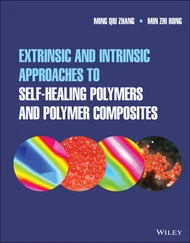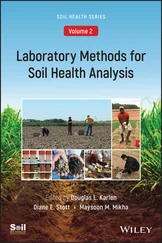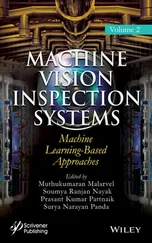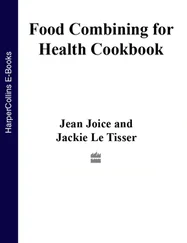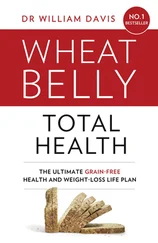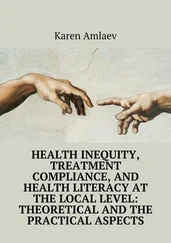Approaches to Soil Health Analysis, Volume 1
Здесь есть возможность читать онлайн «Approaches to Soil Health Analysis, Volume 1» — ознакомительный отрывок электронной книги совершенно бесплатно, а после прочтения отрывка купить полную версию. В некоторых случаях можно слушать аудио, скачать через торрент в формате fb2 и присутствует краткое содержание. Жанр: unrecognised, на английском языке. Описание произведения, (предисловие) а так же отзывы посетителей доступны на портале библиотеки ЛибКат.
- Название:Approaches to Soil Health Analysis, Volume 1
- Автор:
- Жанр:
- Год:неизвестен
- ISBN:нет данных
- Рейтинг книги:3 / 5. Голосов: 1
-
Избранное:Добавить в избранное
- Отзывы:
-
Ваша оценка:
- 60
- 1
- 2
- 3
- 4
- 5
Approaches to Soil Health Analysis, Volume 1: краткое содержание, описание и аннотация
Предлагаем к чтению аннотацию, описание, краткое содержание или предисловие (зависит от того, что написал сам автор книги «Approaches to Soil Health Analysis, Volume 1»). Если вы не нашли необходимую информацию о книге — напишите в комментариях, мы постараемся отыскать её.
A concise survey of soil health analysis and its various techniques and applications Soil Health, Volume One: Approaches to Soil Health Analysis
Approaches to Soil Health Analysis, Volume 1 — читать онлайн ознакомительный отрывок
Ниже представлен текст книги, разбитый по страницам. Система сохранения места последней прочитанной страницы, позволяет с удобством читать онлайн бесплатно книгу «Approaches to Soil Health Analysis, Volume 1», без необходимости каждый раз заново искать на чём Вы остановились. Поставьте закладку, и сможете в любой момент перейти на страницу, на которой закончили чтение.
Интервал:
Закладка:
28 Havlicek, E., & Mitchell, E. A. (2014). Soils supporting biodiversity. In J. A. Krumins & J. Dighton (Eds.), Interactions in soil: Promoting plant growth (pp. 27–58). Springer, Dordrecht. https://doi.org/10.1007/978‐94‐017‐8890‐8_2
29 Herrick, J. E., Brown, J. R., Bestelmeyer, B. T., Andrews, S. S., Baldi, G., Davies, J., Duniway, M., Havstad, K. M., Karl, J., Karlen, D. L., Peters, D. P. C., Quinton, J. N., Riginos, C., Shaver, P. L., Steinaker, D., & Twomlow, S. (2012). Revolutionary land use change in the 21st century: Is (rangeland) science relevant? Rangeland Ecology & Management, 65, 590–598. https://doi.org/10.2111/REM‐D‐11‐00186.1
30 Hillel, D. (1991). Out of the earth: Civilization and the life of the soil. Oakland, CA: University of California Press.
31 Hornby, D., & Bateman, G. L. (1997). Potential use of plant root pathogens as bioindicators of soil health. In C. Pankhurst, B. M. Doube, & V. V. S. R. Gupta (Eds.), Biological indicators of soil health (pp. 179–200). New York: CAB International.
32 Idowu, O. J., van Es, H. M., Abawi, G. S., Wolfe, D. W., Ball, J. I., Gugino, B. K., Moebius, B. N., Schindelbeck, R. R., & Bilgili, A.V. (2008). Farmer‐oriented assessment of soil quality using field, laboratory, and VNIR spectroscopy methods. Plant & Soil, 307, 243–253. https://doi.org/10.1007/s11104‐007‐9521‐0
33 Karlen, D. L., Mausbach, M. J., Doran, J. W., Cline, R. G., Harris, R. F., & Schuman, G. E. (1997). Soil quality: A concept, definition, and framework for evaluation. Soil Science Society of America Journal, 61, 4–10. https://doi.org/10.2136/sssaj1997.03615995006100010001x
34 Karlen, D. L., Peterson, G. A., & Westfall, D. G. (2014). Soil and water conservation: Our history and future challenges. Soil Science Society of America Journal, 78, 1493–1499. https://doi.org/10.2136/sssaj2014.03.0110
35 Karlen, D. L., & Rice, C.W. (2015). Soil degradation: Will humankind ever learn? Sustainability, 7, 12490–12501. https://doi.org/10.3390/su70912490
36 Lal, R. (2015). Restoring soil quality to mitigate soil degradation. Sustainability, 7, 5875–5895. https://doi.org/10.3390/su7055875
37 Larson, W. E., & Pierce, F. J. (1991). Conservation and enhancement of soil quality. Evaluation for sustainable land management in the developing world. In IBSRAM Conference Proc. 12th. Int. Board for Soil Research and Management, Jatujak Thailand, Bangkok, Thailand. p. 175–203.
38 Larson, W. E., Eynard, A., Hadas, A., & Lipiec, J. (1994). Control and avoidance of soil compaction in practice. In B. D. Soanee & C. van Ouwerkerk (Eds.), Soil compaction in crop production (pp. 597–625). Developments in Agricultural Engineering 11. Amsterdam, Netherlands: Elsevier. https://doi.org/10.1016/B978‐0‐444‐88286‐8.50033‐7
39 Ladygina, N., & Hedlund, K. (2010). Plant species influence microbial diversity and carbon allocation in the rhizosphere. Soil Biology & Biochemistry, 42(2), 162–168. https://doi.org/10.1016/j.soilbio.2009.10.009
40 Liebig, M. A., Miller, M. E., Varvel, G. E., Doran, J. W., & Hanson, J. D. (2004). AEPAT: Software for assessing agronomic and environmental performance of management practices in long‐ term agroecosystem experiments. Agronomy Journal, 96, 109–115. https://doi.org/10.2134/agronj2004.0109
41 Mausbach, M. J., & Seybold, C. A. (1998). Assessment of soil quality. In R. Lal (Ed.), Soil quality and agricultural sustainability (pp. 33–43). Chelsea, MI: Ann Arbor Press.
42 McDaniel, M. D., Tiemann, L. K., & Grandy, A. S. (2014). Does agricultural crop diversity enhance soil microbial biomass and organic matter dynamics? A meta‐analysis. Ecological Applications, 24(3), 560–570. https://doi.org/10.1890/13‐0616.1
43 Moebius, B. N., van Es, H. M., Schindelbeck, R. R., Idowu, O. J., Thies, J. E., & Clune, D. J. (2007). Evaluation of laboratory‐measured soil properties as indicators of soil physical quality. Soil Science, 172, 895–912. https://doi.org/10.1097/ss.0b013e318154b520
44 Montgomery, D. R. (2007). Dirt: The erosion of civilizations. Berkley, CA: University of California Press.
45 National Research Council. (1993). Soil and water quality: An agenda for agriculture. Washington, DC: National Academic Press.
46 Norris, C. E., Bean, G. M., Cappellazzi, S. B., Cope, M., Greub, K. L. H., Liptzin, D., Rieke, E. L., Tracy, P. W., Morgan, C. L. S., & Honeycutt, C. W. (2020). Introducing the North American project to evaluate soil health measurements. Agronomy Journal. https://doi.org/10.1002/agj2.20234
47 Nutrien Ltd. (2018). Nutrien Announces Agreement to Purchase Waypoint Analytical, a Leading U.S. Agricultural Lab and Soil Science Company. https://www.prnewswire.com/news‐releases/nutrien‐announces‐agreement‐to‐purchase‐waypoint‐analytical‐a‐leading‐us‐agricultural‐lab‐and‐soil‐science‐company‐300677498.html(verified 13 July 2020).
48 Pankhurst, C. E., Doube, B. M., & Gupta, V. V. S. R. (1997). Biological indicators of soil health: Synthesis. In C. E. Pankhurst, B. M. Doube, & V. V. S. R. Gupta (Eds.), Biological indicators of soil health (pp. 419–435). New York: CAB International.
49 Paustian, K., Lehmann, J., Ogle, S., Reay, D., Robertson, G. P., & Smith, P. (2016). Climate‐smart soils. Nature, 532(7597), 49–57. https://doi.org/10.1038/nature17174
50 Renard, K. G., Yoder, D. C., Lightle, D. T., & Dabney, S. M. (2011). Universal soil loss equation and revised universal soil loss equation. In R. P. C. Morgan & M. A. Nearing (Eds.), Handbook of erosion modelling (pp. 137–167). Oxford, UK: Blackwell Publishing.
51 Schjønning, P., Elmholt, S., & Christensen, B. T. (2004). Soil quality management– Concepts and terms. In P. Schjønning, S. Elmholt, & B. T. Christensen (Eds.), Managing soil quality: Challenges in modern agriculture (pp. 1–15). Wallingford, UK: CABI Publishing.
52 Singh, B. K., Millard, P., Whiteley, A. S., & Murrell, J. C. (2004). Unravelling rhizosphere–microbial interactions: Opportunities and limitations. Trends in Microbiology, 12(8), 386–393. https://doi.org/10.1016/j.tim.2004.06.008
53 Stott, D. E., Andrews, S. S., Liebig, M. A., Wienhold, B. J., & Karlen, D. L. (2010). Evaluation of β‐ glucosidase activity as a soil quality indicator for the soil management assessment framework (SMAF). Soil Science Society of America Journal, 74, 107–119. https://doi.org/10.2136/sssaj2009.0029
54 Sustainability Reports. (2019). 86% of S&P 500 Index Companies Publish Sustainability / Responsibility Reports in 2018. https://www.sustainability‐reports.com/86‐of‐sp‐500‐index‐companies‐publish‐sustainability‐responsibility‐reports‐in‐2018/
55 Tilman, D. G. (1998). The greening of the green revolution. Nature, 396, 211–212. doi:10.1038/24254
56 Turmel, M. S., Speratti, A., Baudron, F., Verhulst, N., & Govaerts, B. (2015). Crop residue management and soil health: A systems analysis. Agricultural Systems, 134, 6–16. https://doi.org/10.1016/j.agsy.2014.05.009
57 USDA‐ARS. (2015). Revised Universal Soil Loss Equation, Version 2 (RUSLE2). USDA National Soil Erosion Research Laboratory. https://data.nal.usda.gov/dataset/revised‐universal‐soil‐loss‐equation‐version‐2‐rusle2(verified 12 June 2020).
58 USDA‐ARS. (2017). Water Erosion Prediction Project (WEPP). USDA Agricultural Research Service. Washington, DC. https://data.nal.usda.gov/dataset/water‐erosion‐prediction‐project‐wepp(verified 12 June 2020).
59 USDA‐ARS. (2018). Wind Erosion Prediction System (WEPS). USDA ARS Engineering & Wind Erosion Research Unit. Washington, DC. https://data.nal.usda.gov/dataset/wind‐erosion‐prediction‐system‐weps(verified 12 June 2020).
60 USDA‐NRCS. (2019a). The Basics of Addressing Resource Concerns with Conservation Practices within Integrated Soil Health Management Systems on Cropland, by D. Chessman, B.N. Moebius‐Clune, B.R. Smith, and B. Fisher. Soil Health Technical Note No. 450‐04. Available on NRCS Electronic Directive System. Washington, DC. https://directives.sc.egov.usda.gov(verified 12 June 2020).
Читать дальшеИнтервал:
Закладка:
Похожие книги на «Approaches to Soil Health Analysis, Volume 1»
Представляем Вашему вниманию похожие книги на «Approaches to Soil Health Analysis, Volume 1» списком для выбора. Мы отобрали схожую по названию и смыслу литературу в надежде предоставить читателям больше вариантов отыскать новые, интересные, ещё непрочитанные произведения.
Обсуждение, отзывы о книге «Approaches to Soil Health Analysis, Volume 1» и просто собственные мнения читателей. Оставьте ваши комментарии, напишите, что Вы думаете о произведении, его смысле или главных героях. Укажите что конкретно понравилось, а что нет, и почему Вы так считаете.

